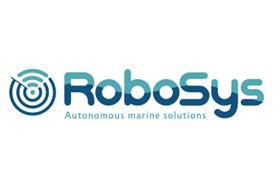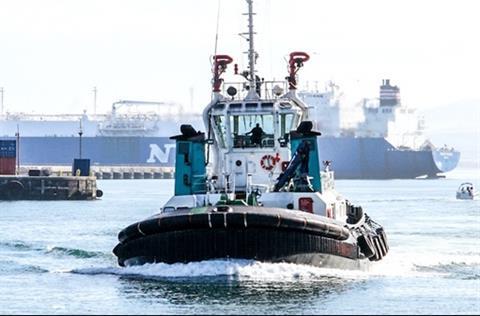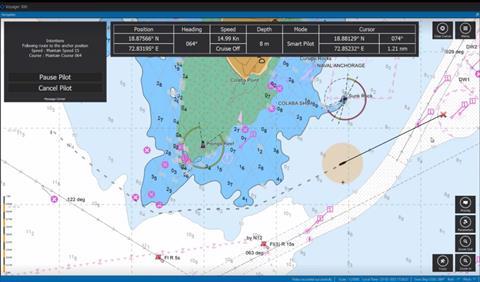Robosys and SEA.AI combine their pioneering technologies to create the world’s first of-its-kind machine vision-based maritime autonomous surface collision avoidance system.

Developed for an Indian shipping operator operating in the Mumbai region, this is the world’s first commercial vessel to feature this integrated Perception System to support both crewed and uncrewed operations including for remote and autonomous maritime operations. Integration of Robosys’ Voyager AI intelligent navigation software together with SEA.AI’s Sentry enables vessels to benefit from market-leading obstacle and collision avoidance that is further enhanced by non-fatigue optical algorithms.
The Robosys-SEA.AI’s systems seamlessly integrate via software interfaces to provide early alerts to crews and remote operation hubs regarding objects on the surface of the water. Using the latest camera technology in combination with artificial intelligence (AI), SEA.AI detects and classifies objects, including those that are not obvious when using conventional systems such as Radar or AIS. Installation of the integrated Robosys’ Voyager AI and SEA.AI’s system is now complete, with the first vessel due to start sea trials.

Whilst the machine vision system primarily enhances safety, provides superior, no fatiguing, 360° situational awareness and surveillance for commercial vessels, government craft, first responders and motor yachts, Voyager AI itself also brings wider benefits such as improved fuel efficiency through smart path planning.
The integrated SEA.AI machine vision system analyses all the pixels coming from the set of thermal and low light cameras to detect and assess the level of risk of the floating objects around the vessel. This pioneer technology uses latest deep learning capabilities and ever-growing proprietary database of 9+ millions of annotated marine objects to classify the type of floating hazards detected.
The Voyager AI System fuses the Machine Vision’s target data with other track sources such as from Radar and AIS and then either recommends or manoeuvres the vessel taking in to account all navigation, shipping and ENC hazards. Voyager AI is proven onboard vessels up to 320m.
The System has a far-reaching detection range, combined with the widest detection angle and fastest detection frequency available, which improves performance in unfavourable sea conditions.

Nigel Lee CSO says, “In 2022 Robosys and SEA.AI first identified the need to provide the additional optical reassurance to crewed and uncrewed vessels, through providing the visual aspect of watchkeeping, thereby supporting COLREGS Rule 5 Visual Lookout, without fatigue and enhanced consistency. It is great to experience the first vessel now utilising this unique and essential solution, which will contribute to helping create safer seas and potentially save lives.”
“Seeing our collaboration come to life with Robosys is truly exciting”, said Marcus Warrelmann, CEO of SEA.AI. “Our unique Maritime Machine Vision provides optical reassurance to crewed and uncrewed vessels, and represents a significant step towards safer seas and enhanced maritime safety. This achievement reaffirms our dedication to innovation and our mission to make a positive impact in the industry.”
Find out more about Robosys Automation and Voyager AI maritime autonomy
About RoboSys automation
Since 2002, Robosys Automation has been regarded as the world leader in maritime autonomy and smart shipping applications, delivering pioneering and intelligent navigation solutions to crewed, lean-crewed and autonomous vessels, USVs and ships, from 3m to 320m.
Headquartered at the UK’s National Oceanography Centre with offices in India, Turkey, India and Canada, Robosys’ solutions are proven and boast full IMO Degree 4 Maritime Autonomy capability.
Robosys has two decades of experience in developing and supporting AI maritime autonomy and smart shipping solutions with its platform, propulsion, and sensor-agnostic software; for both operational purposes, and for training simulation in synthetic environments.
Robosys’ solutions include its ground-breaking VOYAGER AI software which transforms any motorised vessel into a fully autonomous Unmanned Surface Vessel (USV); which features independent navigation, collision and obstacle avoidance, anti-grounding and dynamic route optimisation.
In addition, Robosys offers numerous options to complement VOYAGER AI, including COLREGS-compliant Collision Avoidance Decision Aid (CADA) applications, to enhance the safety in the support of crewed and lean crewed watchkeepers. Other options include Voyager Platform Control providing Remote Steering, Engine Control and Propulsion Control, together with Voyager Platform Management, providing Alarm Monitoring, together with Switch & Relay Controlling.
Applications are used in vessels undertaking surveying, pilotage, defence, bulk, short sea, search and rescue, and research operations.
Robosys’ international partners include the Australian Maritime College (AMC Search), Maritime Research Institute of Netherlands (MARIN) and the Marine Robotics Innovation Centre (MRIC) at the UK’s National Oceanography Centre (NOC).
About RoboSys Voyager AI
Following Robosys Automation’s simulated and worldwide live testing spanning from Canada though the USA, UK, Europe, ME, India to Australia, from its UK headquarters at the UK’s National Oceanography Centre, combined with customer data, Voyager AI boasts improved collision avoidance, and enhanced unique twinning to vessel operational characteristics and mission profile.
New and improved collision avoidance algorithms have been devised through extensive utilisation of simulation software combined with real-time challenges. Multi-vessel avoidance manoeuvre scenarios have also been tested and further enhanced, with Voyager AI featuring improved Explainable collision regulations’ (COLREGs) compliance.
In addition, the Loss of Communications (LoC) function is now a licensable feature of Voyager AI, providing peace of mind to operators by enabling mission continuity in the event of a breakdown in communications.
Furthermore, improved vessel track and dynamic navigational path changes are made in accordance with a vessels’ specific manoeuvrability and its other performance characteristics, which results in a manoeuvring path matched to that particular vessel’s characteristics.
Navigational paths are now set and validated according to user-selected chart parameters, Voyager AI can now be swiftly tuned according to the specific vessel operating area, such as ocean, coastal, or inshore waters.
An exciting addition to Voyager AI has been the addition of an integrated Remote & Autonomous Platform Alarm, Monitoring & Control System (AMCS) tailored by Robosys to provide full support for USVs.
Voyager AI now also integrates and controls multiple ship’s hardware, including vessel systems, switches, relays and monitoring systems and alarms. This can range from deck and hull sensors, through to creating an auto-response to initiate an automatic fire extinguisher thanks to tailored pre-set values.
Key to platform integration is the alignment of payload control with vessel control systems and thus Voyager’s AMCS now integrates payload control and the vessel’s performance for seamless USV maritime operations which is specifically aligned to best suit the mission.
About SEA.AI
SEA.AI is a pioneer in the field of machine vision for marine applications. It employs 45 people in Austria, France, Portugal, and the United States. Its range of products combines optical and thermal sensors with artificial intelligence for enhanced comfort and safety at sea.
SEA.AI systems detect and identify any floating object near the boat and alert the crew in real time. SEA.AI system comes in a wide range of versions for yachts, commercial shipping, USV, and search and rescue vessels.
Find out more about SEA.AI










